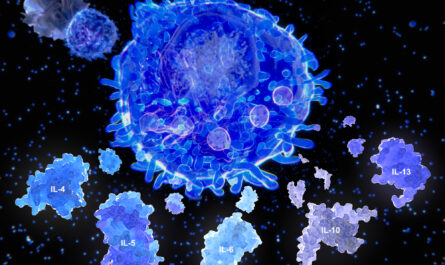Researchers have developed and computationally analyzed three chimeric agonists of the glucagon-like peptide-1 (GLP-1) receptor in a study published in Scientific Reports. The researchers fused native and mutant GLP-1 with designed ankyrin repeat protein (DARPin) to create stable and functional fusion proteins with high affinity for the GLP-1 receptor and human serum albumin (HSA). These proteins could potentially be used for the treatment of type 2 diabetes mellitus (T2DM).
Despite the availability of various treatment options for T2DM, including diet and lifestyle modification, antidiabetic medications, and insulin, glycemic control in individuals with diabetes remains poor. This highlights the need for new and effective treatment options.
GLP-1 and its analogs have shown promise in recent years for the treatment of T2DM. However, their short physiological half-life, which is less than two minutes, limits their therapeutic applicability. There is therefore a need to develop long-acting GLP-1 receptor agonists that can resist proteolytic degradation and renal clearance.
In this study, the researchers fused native GLP-1 and protease-resistant mutants of GLP-1 with DARPin, which is an HSA-binding protein with a longer half-life. They then assessed the stability, function, and affinity of the fusion proteins towards specific targets using computational analysis.
The study involved developing two protease-resistant GLP-1 mutants (mGLP-1) to prevent recognition and degradation by trypsin or dipeptidyl peptidase IV (DPP-IV). The native GLP-1 (nGLP-1) and mGLP-1 molecules were each genetically fused to DARPin using a rigid, helical linker to create three fusion proteins: nGLP-1-DARPin, mGLP-1-DARPin-1, and mGLP-1-DARPin-2. The rigidity of the linker helped maintain the distance between the protein domains, preserving their individual biological functions.
The properties of the fusion proteins, including their physical and chemical characteristics, secondary and three-dimensional structures, and solubility, were assessed through computational analysis. The fusion proteins were found to be stable, soluble, and thermostable, with good predicted three-dimensional structures. They did not exhibit toxic potential.
Molecular dynamics simulations showed that all three fusion proteins remained stable and compact throughout the simulations, maintaining their biological activity. Protein-protein docking simulations revealed that the fusion proteins retained their ability to bind to the GLP-1 receptor and HSA.
The study demonstrates the potential of using albumin-binding proteins as fusion partners, rather than albumin itself, to improve the stability and half-life of fusion proteins. It also highlights the usefulness of computational approaches and bioinformatics tools in reducing the time and cost of experimental studies while improving their success rate.
The long-lasting and protease-resistant chimeric proteins engineered in this study could be further developed as potential therapeutics for T2DM patients. However, further experimental and clinical research is needed to confirm these findings.
*Note:
1. Source: Coherent Market Insights, Public sources, Desk research
2. We have leveraged AI tools to mine information and compile it




